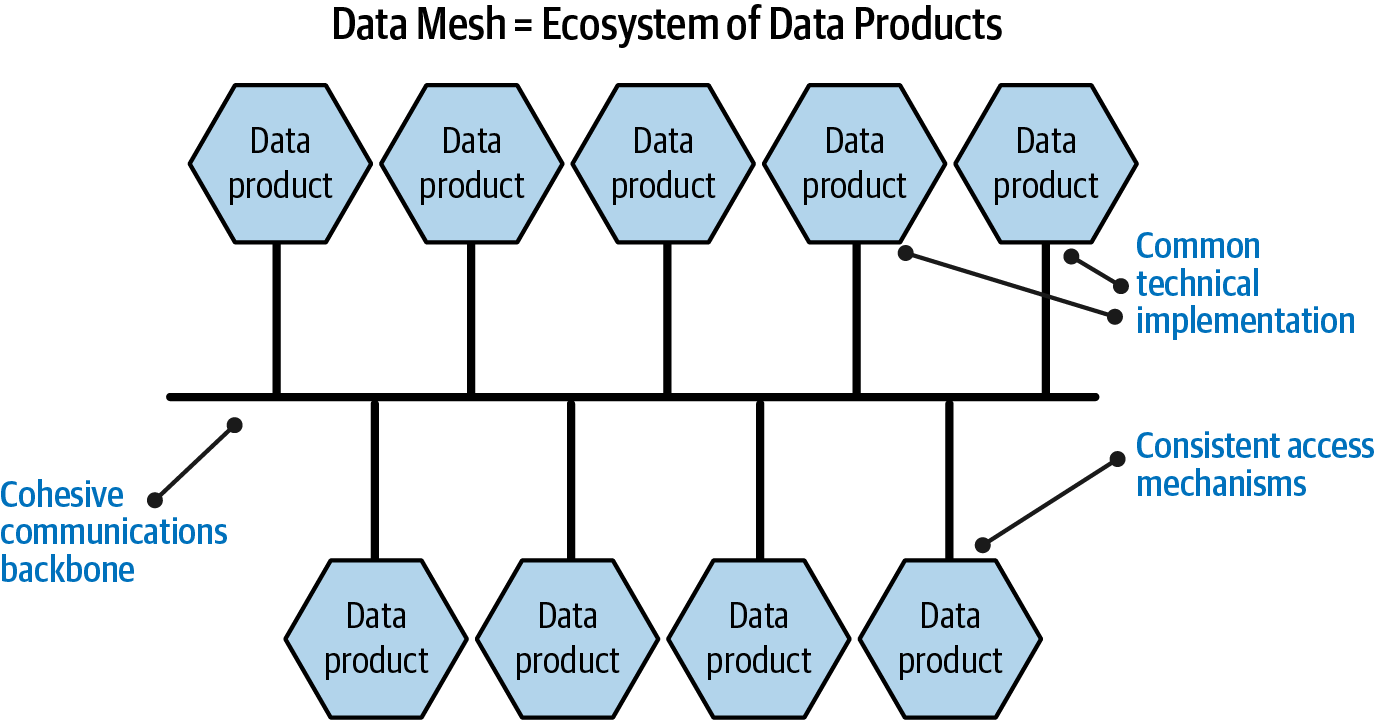Chapter 2. Applying Data Mesh Principles
At its simplest, a Data Mesh is just an ecosystem of interacting data products, as shown in Figure 2-1. As in any ecosystem, there are many moving parts, each operating somewhat independently, that are connected through common standards and a communications backbone. And data products in a Data Mesh ideally have a common technical implementation with a consistent set of interfaces.

Figure 2-1. Data Mesh: an ecosystem of interacting data products
Data Mesh is, at its foundation, a conceptual framework in the realm of data architecture, which emphasizes decentralized data ownership and architecture. It recognizes that in large organizations, data is vast and varied, where each business domain has a significant degree of autonomy over (as well as local knowledge and mastery of) its own data. By decentralizing control, Data Mesh empowers individual domains to manage and make decisions about their data while maintaining a cohesive overall structure. With this autonomy presumably comes better, more localized, and faster decisions, which in turn lead to more speed and agility.
In the context of a Data Mesh, a data product is a package of data that is self-contained, self-descriptive, and oriented toward a specific business purpose or function. Data products are packages of data crafted to address specific business objectives within an organization. ...
Get Implementing Data Mesh now with the O’Reilly learning platform.
O’Reilly members experience books, live events, courses curated by job role, and more from O’Reilly and nearly 200 top publishers.

